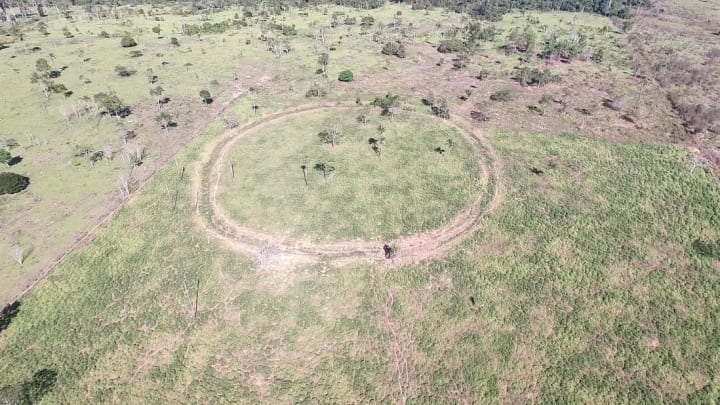Depictions of the pre-Columbian Amazon basin as dense, inhospitable jungle with just a handful of indigenous communities scattered along the river may need to be updated. According to research published in Nature Communications, there were millions more people living in the rainforest prior to Spanish colonization than previously believed.
The Amazon is the largest rainforest on Earth, which poses a challenge to archaeologists exploring the history of the people who lived there. It's long been assumed that native Amazonians chose to avoid the heart of the forest and instead lived as nomads, never straying far from the major rivers. Some old estimates placed the population of the entire basin between 1.5 and 2 million people.
Thanks to satellites, researchers can now identify traces of long-gone settlements in the less-explored regions of Brazil without having to set foot in the jungle. A team of archaeologists from the University of Exeter used satellite imaging to find geoglyphs—large shapes dug into the ground, possibly for ceremonial purposes—in part of the Brazilian state of Mato Grosso that was thought to be uninhabited.

After pinpointing the locations of these earthworks, archaeologists visited this section of the southern rim of the Amazon to see some of them in person. At each of the 24 sites they set out to confirm, they found a real-life geoglyph on the ground. At one location, they uncovered charcoal and pottery dating back to 1410 CE. In all, they documented 81 new sites with geoglyphs.
The earthworks would have been carved into the dirt during a seasonal drought, allowing the architects to clear a swath of rainforest. Fortified villages were built in or close to the glyphs, with a network of roads connecting them to each other. The researchers created a computer model that estimated that a 154,000-square-mile patch of land could be home to the remains of 1300 geoglyphs and villages, only two-thirds of which have been discovered. In the late pre-Columbian period, the area, comprising just 7 percent of the Amazon basin, may have sustained a population of 500,000 to 1 million people, according to the researchers' models.

Disease and genocide brought on by the European invasion destroyed most of those settlements, and they were later reclaimed by the rainforest. But evidence of their existence suggests that deforestation and development of the Amazon isn't a new phenomenon.
"Our research shows we need to re-evaluate the history of the Amazon. It certainly wasn't an area populated only near the banks of large rivers, and the people who lived there did change the landscape," researcher José Iriarte said in a statement. "Studies such as ours mean we are gradually piecing together more and more information about the history of the largest rainforest on the planet."
